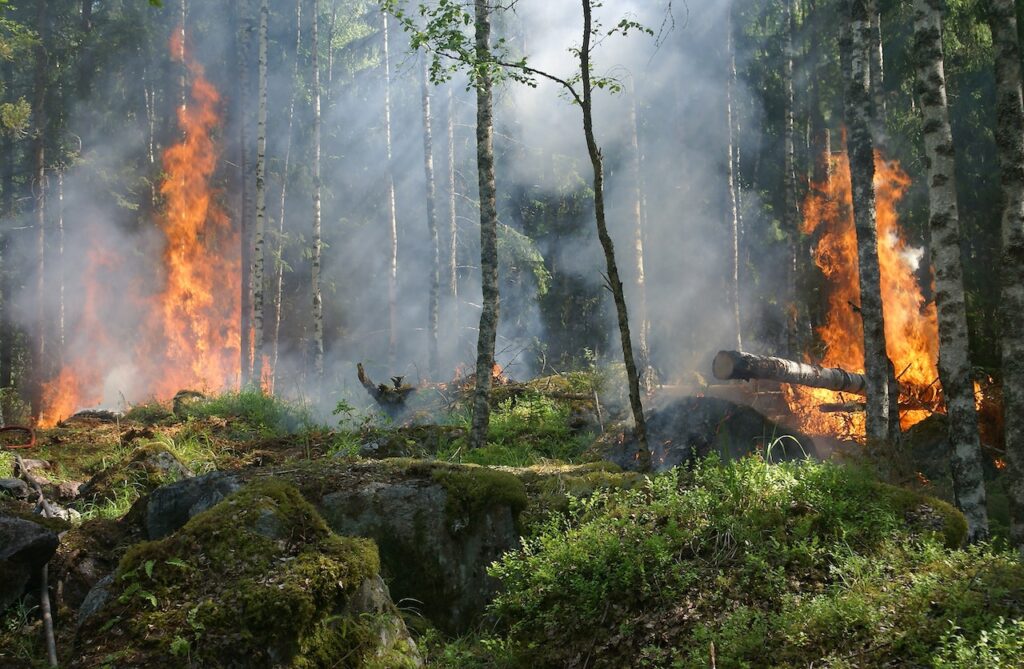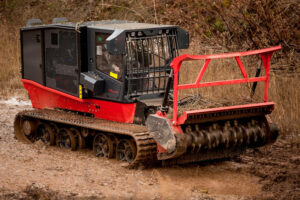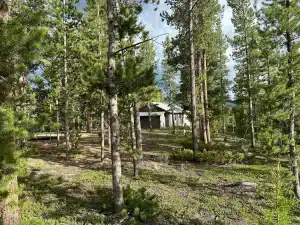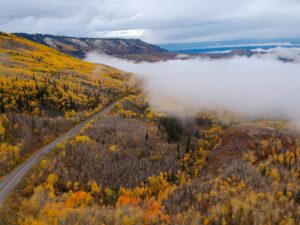Landowners in Colorado have a front-row seat to the beauty and wildlife that the many forest and mountains provide from the serenity of their backyard. However, along with this privilege comes the responsibility of caring for the land.
Wildfires pose a significant risk for homeowners living in forested areas. More than 3 million Coloradans live in the wildland-urban interface (WUI) – where homes and other buildings intermingle with the forest. These homes are especially at risk of being negatively impacted by a wildfire. While wildfires are natural events that cannot be prevented, having a defensive plan can help you protect your property if a wildfire occurs.
Wildfire mitigation efforts are on-the-ground treatments of your property that can reduce the chance of a wildfire causing damage. Planning ahead and taking action to implement a fire mitigation strategy can increase the likelihood of your home surviving when a wildfire occurs.
Also, following a fire mitigation strategy creates a safe area for firefighters who may need to engage in the fire and attempt to protect your property. By helping to create safe site conditions, firefighters will be better able to save your home if the need should arise.
As you begin taking action to prepare your property for a wildfire, remember: fire mitigation is not a once-and-done project. A good fire mitigation strategy requires ongoing maintenance if you want your home to survive a fire. Download our Fire Mitigation Checklist to help you keep track of all the techniques you’ve implemented on your property and when and how to maintain them.
Creating a good fire mitigation strategy starts by making changes to your home and landscape that create a defensible space around your home to reduce fire hazards. There are different strategies that property owners need to consider when addressing each area – or zone – of their property. When considering wildfire mitigation, we always start with the home or structure and work outwards. The zones include the Immediate zone (0-5 feet around the house), the Intermediate zone (5-30 feet), and the Extended zone (30-100) feet. Your approach to each area is going to be different.
The Immediate Zone – 0 to 5 feet around the house The goal of the immediate zone is to prevent flames from coming in direct contact with the home or structure. Actions that can be taken in the Immediate zone include:
- Trimming branches hang over the house, porch, or deck.
- Prune branches of large trees 6 to 10 feet from the ground.
- Remove plants that contain resins, oils, and waxes.
- Use crushed stone or gravel instead of flammable mulches.
- Remove leaves, pine needles, and other combustible material from the roof, gutters, and under the deck.
- Keep your lawn hydrated and maintained.
- Move Construction materials, trash, and wood piles at least 30 feet away.
- Inspect shingles or roof tiles & replace missing shingles or tiles & cover ends of tiles with bird stops or cement to prevent ember penetration.
- Enclose eaves to prevent ember entry.
- Cover exterior attic and soffit vents with ⅛” wire mesh to prevent sparks from entering your home.
- Screen areas below decks and porches with ⅛” wire mesh to prevent material from accumulating underneath.
Intermediate Zone – 5 to 30 feet around the house The priority for this zone is to give an approaching fire less fuel to reduce its intensity as it nears your home. Action that can be taken in the intermediate zone focus on landscaping and hardscaping to help influence the fire behavior:
- Clear vegetation from under large stationary propane tanks.
- Create fuel breaks with driveways, walkways/paths, patios, or decks.
- Mow grasses to four inches or less.
- Remove vegetation under trees so a surface fire cannot reach the crowns.
- Prune trees up to six to ten feet from the ground.
- Space trees to have at least eighteen feet between crowns, with the distance increasing with the percentage of slope.
- Place trees to ensure that the mature canopy is no closer than ten feet to the edge of the structure.
- Trees/shrubs in this zone should be limited to small clusters only to break up the continuity of vegetation.
- Remove any stressed, diseased, or dead trees.
- Remove common ground junipers because they are highly flammable.
- Prune and maintain shrubs to prevent excessive growth. Remove dead stems annually.
Extended Zone – 30 to 100 feet around the house Efforts in this zone are focused on mitigation that keeps the fire on the ground while also taking steps to improve forest health. Steps to consider in the Extended zone include:
- Dispose of heavy accumulations of litter or debris.
- Remove dead plants and trees.
- Remove small conifers that grow between mature trees.
- Remove any vegetation next to sheds or other structures.
- Trees thirty to sixty feet from the house should have at least twelve feet between canopy tops.
- Trees sixty to one hundred feet from home should have at least six feet between the canopy tops.
Maintaining these zones requires regular, ongoing maintenance to be the most effective. The forest is a dynamic environment; as trees, grasses, and shrubs continue to grow, drop leaves, or die, there will be an ever-changing list of maintenance required to keep your home as safe as possible in the event of a wildfire. Whether you have a one-acre lot or a 100+ acre ranch, our skilled team of operators and specialized equipment are equipped to mitigate your property efficiently and affordably so that your family and property are prepared when the next wildfire comes. Take action now to prevent a devastating event in the future. `
Do You Have a Fire Mitigation Strategy for Your Land?
If you are in the process of creating or updating your fire mitigation plan, the experts at Bear Claw are ready to help. Click here to schedule a free consultation.






